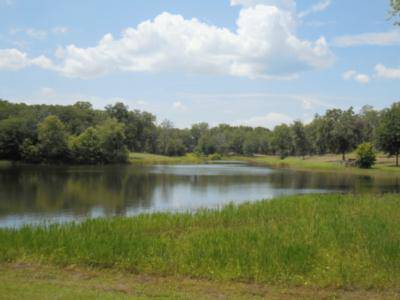Landowners Study the Riparian Zone
There are a great deal of facets that come along with owning rural property; the land steward must study and understand everything there is to know in all areas to create and maintain a working ranch or even a family getaway that is focused on hunting, fishing or other outdoor recreational pursuits.
A riparian zone is a location that must be watched over. These zones – the crossing point or edges where land meets a river or stream – are some of the healthiest and most productive areas on the land when it comes to vegetation and plant habitats. As it is with everything in the landowners’ world, these zones have a real effect on soil conversation, as well as major influence on the land’s fauna, aquatic life and overall productivity. They make up a huge part of the ecosystem, and can alter habitats from woodlands to wetlands to grasslands immensely.
Riverbank education is running rampant through the Lone Star State. In areas where drought, wildfires and more, are constantly part of life – the upkeep of riverbanks and their role in the ecosystems around them is extremely important to know.
A slew of partners: The Texas Water Resources Institute, Texas State Soil and Water Conservation Board, Texas Riparian Association, and Texas A&M Forest Service (just to name a few), are conducting riparian and stream ecosystem education programs all over the state. These programs provide a wealth of information to the landowner, and the data discovered is focused on aiding the landowner by showing them the multitude of benefits they receive from creating healthier riparian zones.
Landowners have specific goals when it comes to the riparian zone: They want to create healthy watersheds and improve water quality through the delivery of riparian zones. They wish to minimize pollution, and be connected with the local resources that will help them improve their management techniques.
It is a fact that riparian ruin is a major threat to water quality, in-stream habitat, and fish and wildlife. However, restoration of these areas take away the bacteria, lowers in-stream temperatures; and ultimately improves the land, and its value, in multiples, for the landowner. This is truly a vital piece of the ranch/farm that must be working correctly and restored fully by the landowner. And the programs, services, and experts needed to do just that are available to all Texas landowners.
More than 200,000 miles of rivers, as well as floodplain and upland areas, are in Texas, and these locations are needed for land to work properly. Which means keeping them healthy – or restoring them to good health – is a number one priority on the landowner’s list.
Only by studying the huge impacts unhealthy riparian zones can have, both on individual properties and the broader Texas landscape, will the landowners of Texas be able to improve their management and meet their goals of having a healthy watershed.
To Learn More About Republic Ranches
